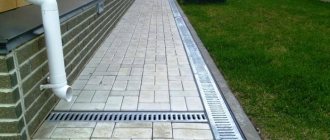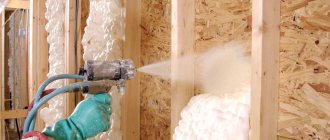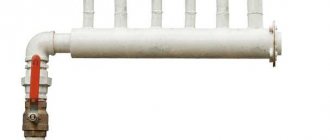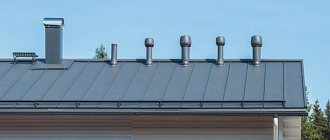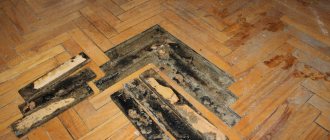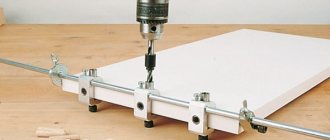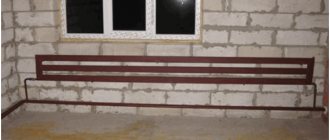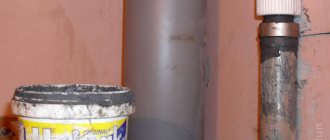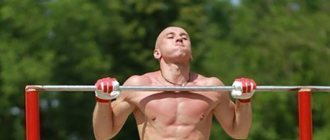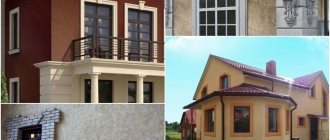“Bark beetle” is one of the types of finishing plaster. To apply it, a special heterogeneous mixture is used - viscous, with an admixture of solid components. "Bark beetle" is used to decorate external and internal walls. The advantages of this material are:
- simplicity and speed of application,
- practicality,
- durability,
- aesthetic appeal.
Bark beetle plaster is resistant to high humidity. It does not allow water to pass through, protecting building structures from getting wet. Another obvious advantage is the appearance.
When applied correctly, the result is a stunning finish that has excellent durability.
If you are thinking of using some other material instead of bark beetle, then you can see a list of modern materials, their advantages and disadvantages in our article: modern materials for finishing walls inside the house.
Features of interior decoration
"Bark beetle" is perfect for interior decoration. This coating has good wear resistance. It is subject to wet cleaning and does not collapse when in contact with household chemicals.
It is applied both in rooms with high loads (corridor, kitchen, bathrooms) and in living rooms.
For interior work, mixtures with small granules are used. There are also options with larger fractions (and as a result, grooves). When applying the material to the prepared surface, bright lighting is necessary. This will allow you to see all the irregularities and eliminate them in a timely manner.
It is also important to exclude drafts and sudden temperature changes.
Modern industry offers various types of mixtures for interior decoration. Depending on the composition, the properties of the products vary. Knowing their differences, you can choose a mixture that is optimal for specific purposes:
- Mineral - fireproof, resistant to mechanical stress, and low cost. Among the disadvantages is poor plasticity, requires certain physical effort, and is not resistant to sudden changes in temperature conditions.
- Acrylic - has high adhesion, moisture resistant and elastic, can be painted at the mixing stage. But she also doesn't like rapid temperature changes.
- Silicate is an ideal option for places with high humidity, can allow steam to pass through, and has the highest wear resistance. The disadvantages include rapid hardening, therefore it is necessary to work with it quickly and without errors; walls require pre-treatment with a special primer. The cost of such plaster is the highest.
Plaster bark beetle
How to paint the “Bark Beetle” after application
Monochromatic painting of the “bark beetle” is not much different from ordinary painting of walls. But the peculiarity of this type of plaster is its relief. Therefore, contrasting coloring looks more interesting, emphasizing the uniqueness of the texture.
Contrasting painting is done with paint for interior or exterior (depending on location) work. It consists of the following steps:
- First, use a roller to paint the surface in the color that will be in depth. Usually light colors are chosen for this. You can move the roller in any direction, the main thing is to paint over everything. A long-haired tool will do the job better.
- The final coating with a second, darker color is applied only after the previous paint has completely dried. Here you will need a roller with short pile - the short length of the pile will not allow you to paint over the grooves. You need to move in one direction.
- The last stage is varnishing. Most often used in public buildings. Or if you want to add shine to the texture and give additional protection to the decorative finish. In this case, use a special acrylic-based plaster varnish. It should be applied strictly according to the instructions. It is advisable to first test on an inconspicuous area or a sample, since after drying the color of the surface may change.
Painting the bark beetle in contrasting colors gives depth to the interior.
This looks especially advantageous in small rooms, visually expanding the space. “Bark beetle” is a decorative finish that is easy to apply, but looks impressive and lasts a long time.
Even an inexperienced master can work with this material. The main thing is to choose the right raw materials taking into account the characteristics of the room, purchase a high-quality tool for applying bark beetle and take into account all the details of the process, even if some seem completely insignificant.
Did our article help you figure out how to apply bark beetle?
Features of facade coating
For finishing external walls, special requirements are imposed on materials. These objects are subject to increased exposure to natural factors, such as:
- temperature changes;
- precipitation;
- solar ultraviolet.
Bark beetle plaster is a moisture-resistant material. But in the cold season, precipitation is not only a frequent occurrence, it also takes longer to dry. Temperature changes can affect the density of the material, and bright sunlight causes color fading. That is why for facade work it is important to strictly follow the finishing application technology. You should also only use mixtures intended for outdoor use.
For facade work, mixtures with large fractions are produced - 1.5 mm or more. The packaging should indicate that this product is suitable for outdoor use.
When decorating external walls with “bark beetle”, technologists recommend making a layer of external insulation. This will not only help keep the house warm, but will also shift the dew point. This move will reduce the likelihood of moisture accumulation and subsequent mold formation inside the structure.
Before you begin applying finishing plaster, you need to study the scope of work to find out whether additional processes are needed. This could be dismantling drainpipes, an outdoor air conditioner unit, and similar tasks. This will allow you to calculate the working time and determine in what portions to knead the mixture.
If it rained the day before, you should wait until the walls are completely dry. In this case, it is better to delay the deadline than to get a poor-quality result.
All preparatory work is carried out before the start of mixing in order to make the application of the “Bark Beetle” as effective as possible. Perforated corners are installed at the corners of the building - they are pressed against the wall and covered with a layer of plaster. This helps maintain even corners when decorating the building.
Colors
Manufacturers of bark beetle plaster mixtures present a certain range of basic colors . If a different color scheme is needed, you can use color scheme . When preparing a mixture, color is added to the water before mixing. You need to tint extremely carefully and remember that the shade in the bucket is different from the applied and frozen color. Therefore, before completely covering the wall with material, it is recommended to apply the mixture to a small area and evaluate the result.
A variety of colors allows you to choose the best coating option for your interior
Purpose and application
Where can you apply bark beetle putty? The range of applications of this material is wide. This can be the facades of a wooden house or its interior (walls and even ceiling). It has proven itself well in the restoration of old buildings. The most important thing is that the putty is applied to the material with which it will adhere well. These include brick, stone, concrete or drywall.
Attention!!! It is important! Putty should not be applied to glass or iron; it does not adhere to such material.
Blend selection
The modern market offers a wide range of not only finishing materials, but even their varieties. Bark beetle plaster is no exception. It differs in some of its characteristics and grain size. The latter also affects consumption - the larger the additive, the greater the consumption. There are two types of mixtures according to their content: acrylic and gypsum. The gypsum mixture is sold dry. You need to knead it and add color yourself. But this option is cheaper. But acrylic mixtures are sold mainly in finished form.
Advantages of facade putty
- To work with this finishing material you do not need special tools. Standard metal, plastic or rubber construction spatulas of appropriate width are sufficient;
- After applying the putty to the surface, it dries quickly and does not form cracks;
This finish dries quickly.
- With its help, you can create a structured or smooth durable surface layer, which, if necessary, can be sanded with a conventional abrasive, for example, sandpaper;
- Harmless and environmentally friendly material that does not emit any odor during operation.
Conclusion
Bark beetle is a good solution for decorating walls, which is reliable, and you can also apply it yourself. The video in this article will show the important points of the workflow clearly, so that you understand it even better and can cope with the work without any problems. If you still have questions, then do not hesitate to write them in the comments under this review, we will analyze each of them.
Did you like the article? Subscribe to our Yandex.Zen channel
November 7, 2021
Construction Chemicals, Plaster and Wall Putty
If you want to express gratitude, add a clarification or objection, or ask the author something, add a comment or say thank you!
The nuances of creating a textured decorative surface
The shape of the pattern on the finished finish is determined by the nature of the movements that are made with a trowel on the plastered base. The classic ornament of wood affected by the bark beetle is formed as a result of arched, circular, uneven movements of the tool in different directions, during the process it must be slightly pressed.
Shape of bark beetle pattern on the wall
The imitation of rough stone, also called travertine, is obtained through short, jerky manipulations, and the trowel must be moved in different directions. The cork ornament is made using a smoothing tool: a tool made of polystyrene foam is intensively moved in a circle with a small radius. The imitation of woven fabric is created by moving the grater crosswise: vertical strokes are formed with a slow and drawn-out movement from bottom to top, horizontal strokes with an energetic short stroke.
The rain-like pattern is formed as a result of continuous long diagonal movements of the grater from top to bottom, starting from the upper right corner. Bark beetle plaster can also be applied in the image of a world map: the first layer is rubbed in the classical way, after it has dried, the second is applied unevenly, making strokes in different directions. The latter are smoothed with a Venetian trowel.
Rating of quality floats for plaster
Wooden
Kapriol 240 x 100
A Chinese-made model with a wooden handle, aluminum base and hard sponge is recommended for final leveling of the mortar. Cost – from 520 rubles.
Kapriol 240 x 100
Advantages:
- good result;
- lightweight due to the aluminum base;
- budget.
Flaws:
- short-lived.
TOPEX 13A248 480×130
The sharp edges of the metal sole make the product with a wooden handle ideal for cutting away excess mortar, grouting and sanding plaster coatings. The average price is from 750 rubles.
TOPEX 13A248 480×130
Advantages:
- long base facilitates quick surface processing;
- wear-resistant;
- durable.
Flaws:
- not for beginners.
Plastic
FIT 39731 230×80
A tool made in China with a plastic body and replaceable grinding elements, which are fixed on an aluminum base with a metal clamp. By changing the nozzles, the surface is gradually leveled to perfect smoothness. The average cost is from 320 rubles.
FIT 39731 230×80
Advantages:
- replaceable nets;
- the handle provides good pressure;
- solid foundation;
- nozzles are easy to change;
- inexpensive.
Flaws:
- none.
STAYER 0815-0 280×140
A plastic float from a Chinese manufacturer with a fine relief on the base allows you to perform a large volume of grinding work on plastered walls due to the light weight and strength of the material. You can buy it for 155 rubles.
STAYER 0815-0 280×140
Advantages:
- manufacturer's warranty – 24 months;
- convenient holder;
- inexpensive;
- reliable, durable.
Flaws:
- none.
Hammer 601-059 230×150
The European quality tool easily copes with a large volume of work due to its low weight and porous structure. Possibility of installing attachments on the base. Cost – from 95 rubles.
Hammer 601-059 230×150
Advantages:
- universal;
- European production;
- quality;
- Excellent sanding of dry plaster and polystyrene;
- thanks to the end clamps, a large processing area is captured;
- replaceable nozzles;
- inexpensive.
Flaws:
- It is difficult to wash off the solution.
Polyurethane
RemoColor 20-5-028 280×140
The Russian-made device for applying plaster is distinguished by its very light weight and ease of use. The rough base completely copes with the task - it sands the walls smoothly and removes even minor protrusions. Cost – from 85 rubles.
RemoColor 20-5-028 280×140
Advantages:
- durable;
- universal;
- comfortable handle;
- light;
- optimal base dimensions.
Flaws:
- the base surface is prone to abrasion.
Sibrtech 86632 420×220
An ergonomic grater with a large area of rough sole provides good grip on the surface being treated and is used for grouting joints and leveling the plastered surface. The average price is from 149 rubles.
Sibrtech 86632 420×220
Advantages:
- reliable;
- a light weight;
- excellent working properties of the sole;
- durable;
- comfortable.
Flaws:
- pressure is required when grouting.
Foam
HARDY 270×130
The product from the Polish manufacturer is suitable for beginners and effectively sands and levels walls plastered with polymer-based solutions. Cost – from 230 rubles.
HARDY 270×130
Advantages:
- effectively levels and compacts the solution;
- light;
- easy to operate.
Flaws:
- short-lived;
- for working only with polymer compounds.
Ormix, 500×120
A grater with a long sole quickly processes large volumes and is used for applying and leveling plastered surfaces. Due to its light weight and lack of strain on the hands, it is used for sanding ceilings. Price – from 129 rubles.
Ormix, 500×120
Advantages:
- long base;
- light;
- inexpensive.
Flaws:
- only for light mixtures;
- breaks down quickly.
Spongy
Volma 400x200x20 on a telescopic rod
This convenient model allows you to process any area thanks to a telescopic handle with adjustable length and is used to soften gypsum plaster before puttying. Cost – from 3400 rubles.
Volma 400x200x20 on a telescopic rod
Advantages:
- quality;
- comfortable;
- durable;
- adjustable handle.
Flaws:
- Expensive.
CORTE 0386C 280×140
A grater with a rubber lining, a durable body and a handle with inserts to prevent your hand from slipping is used for applying gypsum-based mortar without foaming or unevenness. Price – from 715 rubles.
CORTE 0386C 280×140
Advantages:
- reliable, wear-resistant;
- even layer of application;
- anti-slip handle surface;
- easy to care for.
Flaws:
- none.
Metal
KUBALA steel 285×145
A tool with a metal strip base and sharp ends is suitable for removing plaster and preparing surfaces for further processing. Removes old plaster and smoothes out the soft finish. Cost – from 899 rubles.
KUBALA steel 285×145
Advantages:
- easily copes with the removal of old coating;
- wear-resistant;
- durable.
Flaws:
- not found.
